
Not as numerous as you might think: Poison, guns, snares, sport hunting, and habitat loss due to human expansion are taking their toll on the misunderstood hyena.
Hyenas are the subject of perhaps more myths than any other African animal, which has unfortunately led to decades of persecution against these unusual creatures. The rapid expansion of human population into remaining hyena habitat – and the intentional killing of hyenas by humans – will eventually prove to be more than this resilient species can tolerate.
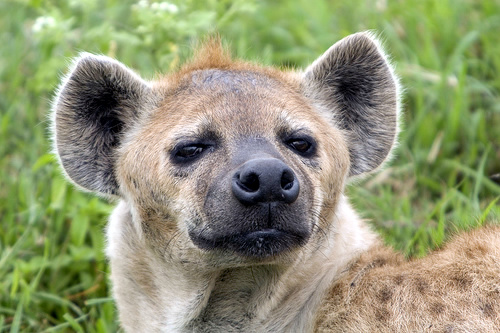
To help raise awareness about hyenas and dispel myths, here are 12 surprising things you didn’t know – plus a compilation of beautiful photos. Enjoy!
Hyena fact 1: There are four species of hyena – the brown hyena (Parahyaena brunnea), spotted hyena (Crocuta crocuta), striped hyena (Hyaena hyaena), and the aardwolf (Proteles cristata, formerly Proteles cristatus).
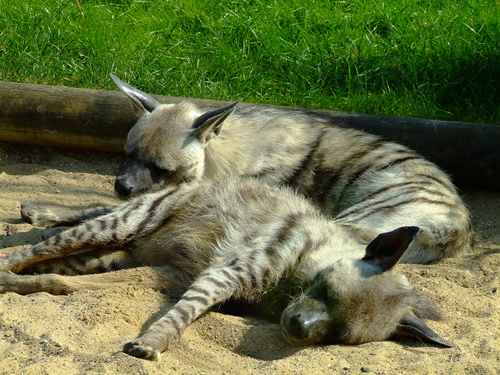
All four species are found in Africa, and the striped hyena’s range includes the Middle East.
Hyena fact 2: Although hyenas resemble dogs, they are more closely related to cats. Their closest living relatives are mongooses, civets, and meerkats.
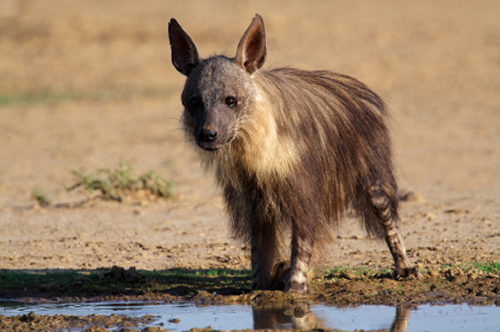
Hyena fact 3: Brown hyenas live in small family groups, striped hyenas live alone except when they have cubs, and aardwolves live in monogamous pairs. Spotted hyenas live in matriarchal clans of up to 90 individuals.
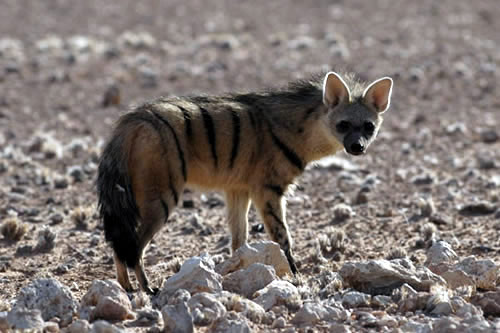
Hyena fact 4: Spotted hyena clans are as complex as many primate societies.
Spotted hyena clans are strikingly similar in their complexity to baboon and macaque societies. The social status of a female spotted hyenas – like female baboons – is actually determined by the social rank of her mother. Spotted hyenas remain with their mothers for an extended period of time – about 15 months – in order for important social learning to take place. In a spotted hyena society, even the lowest ranking female is dominant to the highest ranking male.
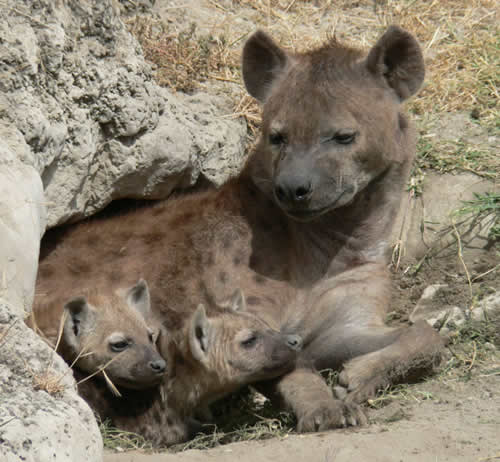
Hyena fact 5: Hyenas mark their territories with a scented paste that is secreted from anal pouches and deposited on twigs and grass stems.
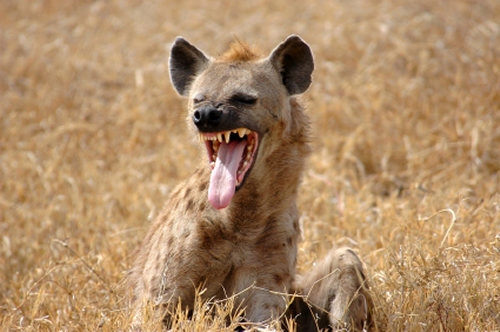
Hyena fact 6: The female spotted hyena has a “pseudo-penis” – and both male and female spotted hyenas greet each other with “erections.”
The clitoris of the female spotted hyena is enormously elongated to form a fully erectile pseudo-penis through which she urinates, copulates, and gives birth. There is even a “structure” that gives the appearance of a scrotal sac, but it’s actually vaginal labia folded over and filled with connective and fatty tissues.
Hyena fact 7: Spotted hyena cubs are born with their eyes open – and with teeth.
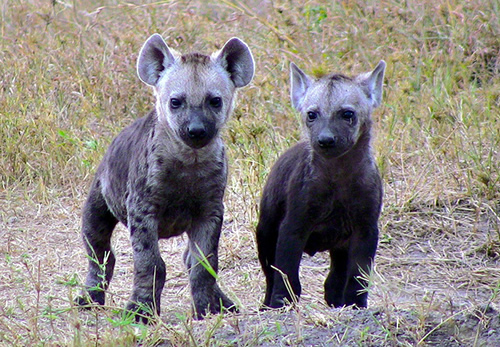
Unfortunately, the first time a spotted hyena gives birth, her cubs often suffocate in her elongated birth canal and are stillborn.
Hyena fact 8: Aardwolves are about the size of a large housecat and feed almost exclusively on ants and termites (note the hairless muzzle). An aardwolf can consume 300,000 termites in a single feeding.
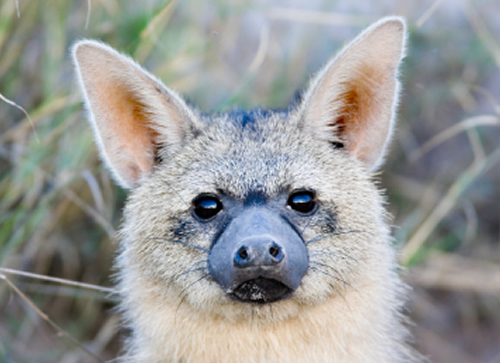
Despite the fact that aardwolves are specialized insect eaters, ignorance prevails: Aardwolves are shot on sight and poisoned by farmers who believe that these diminutive animals prey on livestock.
Hyena fact 9: All hyena species (except the aardwolf ) consume carrion.
However, spotted hyenas are accomplished hunters of ungulates; 95% of their diet is actually from kills and not scavenged.
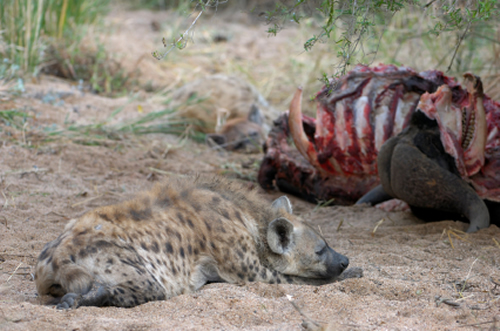
Hyena fact 10: Hyenas are the only animal that carries rabies without developing symptoms and dying from the disease.
In addition to rabies, hyenas can withstand anthrax and canine distemper.
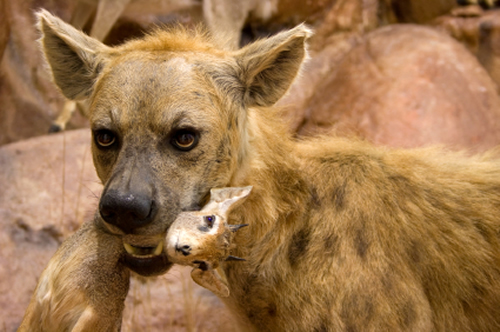
Hyena fact 11: Striped hyenas can tolerate a wide range of quality in their drinking water. They even consume saltwater when necessary.
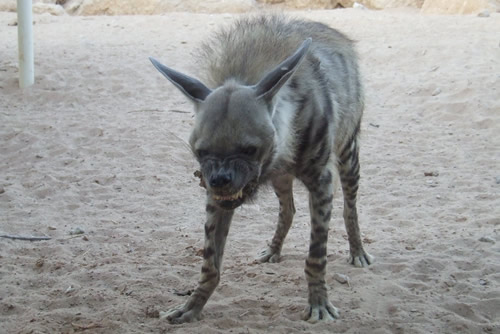
Hyena fact 12: The “laugh” of the spotted hyena actually indicates nervousness, not amusement.
Humans and hyenas
Although the hyena’s greatest enemy used to be the lion, it is now humans. Using a variety of methods, humans are the main source of hyena mortality in most regions.
- Poison: In retaliation for livestock depredation – whether actual or suspected – people lace a cow or other livestock carcass with poison and leave it out so hyenas will feed on it. This has been documented on a mass scale eastern Africa.
- Guns: Hyenas are shot on sight by many ranchers.
- Sport hunting: Every year, spotted hyenas are killed by sport hunters in various parts of Africa.
- Snares: Hyenas are caught by snares set in the fences of livestock corrals. If a hyena gets stuck in one of these, the tribesmen will spear or club the trapped hyena to death. Hyenas also are caught in bushmeat snares. They are killed when the bushmeat hunters check the traps. If a hyena does manage to escape, they usually die a slow death by strangulation.
- Hyenas are killed inadvertently by cars when they attempt to feed on roadkill. Striped hyenas in parts of the Middle East, and spotted and striped hyenas near conflict zones in Africa have also become casualties of these war-torn areas.
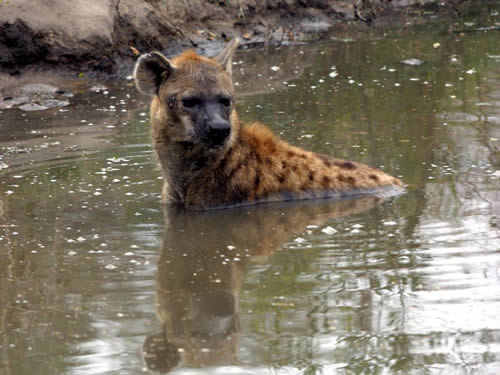
Protecting hyenas
According to the IUCN Hyaena Specialist Group, misinformation about these animals is a serious obstacle to conservation efforts. More myths have arisen in regard to hyaenas than perhaps any other animal in Africa (Glickman 1995). They are portrayed in a negative light in Western art and literature, they are mocked and derided by Hollywood producers, and they are feared and hated by many Africans today. This dark public image, born largely of ignorance, currently represents one of the most serious obstacles to the conservation of spotted and other hyenas (Mills & Hofer 1998).
Sadly, like so much of the planet’s remaining wildlife, the range size of all four hyena species is dwindling.
Habitat loss is having a major impact on the range size of all four extant members of the hyaena family. Specifically, if the ranges of the four hyaena species are compared between the late 1990s and a few decades earlier, rather shocking range contraction can be observed as more and more habitat becomes unsuitable for hyaena habitation.
To learn more about hyena conservation, visit Hyaenidae.org or the IUCN Hyaena Specialist Group.
Sources for this article:
- IUCN Hyaena Specialist Group
- Hyaenidae.org
- Female Hyenas and Male Hormones, a strange combination
- Images: purchased from istock.com unless otherwise noted.
